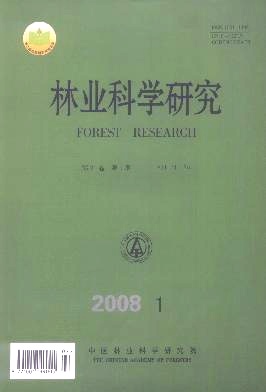|
[1]
|
Lamb D, Erskine P D, Parrotta J A. Restoration of degraded trop icalforest landscapes[J]. Science, 2005, 310: 1628 - 1632 |
|
[2]
|
Ding Y, Zang, R G. Community characteristics of early recoveryvegetation on abandoned lands of shifting cultivation in Bawangling of Hainan Island, South China [J]. Journal of Integrative Plant Biology, 2005, 47: 530 - 538 |
|
[3]
|
Laurance W F. Have we overstated the trop ical biodiversity crisis?[J]. Trends in Ecology and Evolution, 2007, 22: 65 - 70 |
|
[4]
|
Chazdon R L. Trop ical forest recovery: legacies of human impact andnatural disturbances [J]. Perspectives in Plant Ecology, Evolutionand Systematics, 2003, 6: 51 - 71 |
|
[5]
|
Lugo A E, Lowe C. Trop ical Forests: Management and Ecology[M]. New York: Sp ringer2Verlag, 1995 |
|
[6]
|
胡玉佳, 李玉杏. 海南岛热带雨林[M]. 广州:广东高等教育出版社, 1992
|
|
[7]
|
曾庆波, 李意德, 陈步峰, 等. 热带森林生态系统研究与管理[M]. 北京:中国林业出版社, 1997
|
|
[8]
|
蒋有绪,卢俊培. 中国海南岛尖峰岭热带林生态系统[M]. 北京:科学出版社, 1991
|
|
[9]
|
臧润国,余世孝,刘静艳,等. 海南霸王岭热带山地雨林林隙更新规律的研究[J]. 生态学报, 1999, 19 (2) : 151 - 158
|
|
[10]
|
蒋有绪,王伯荪,臧润国,等. 海南岛热带林生物多样性及其形成机制[M]. 北京:科学出版社, 2002
|
|
[11]
|
臧润国, 杨彦承,蒋有绪. 海南岛霸王岭热带山地雨林群落结构及树种多样性特征的研究[J]. 植物生态学报, 2001, 25 ( 3) :270 - 275
|
|
[12]
|
黄世能,王伯荪,李意德. 海南岛尖峰岭次生热带山地雨林的边缘效应[J]. 林业科学研究, 2004, 17 (6) : 693 - 699
|
|
[13]
|
陈德祥,李意德,骆土寿,等. 海南岛尖峰岭鸡毛松人工林乔木层生物量和生产力研究[J]. 林业科学研究, 2004, 17 ( 5) : 598- 604
|
|
[14]
|
李意德. 海南岛尖峰岭热带山地雨林主要种群生态位特征研究[J]. 林业科学研究, 1994, 7 (1) : 78 - 85
|
|
[15]
|
王伯荪,余世孝,施苏华,等. 海南岛热带林生物多样性及其物种进化[M]. 北京:科学出版社, 2005
|
|
[16]
|
臧润国,安树青,陶建平,等. 海南岛热带林生物多样性维持机制[M]. 北京:科学出版社, 2004
|
|
[17]
|
崔丽娟, 张曼胤. 人类干扰对安庆沿江湿地植物多样性的影响[J]. 林业科学研究, 2005, 18 (4) : 441 - 445
|
|
[18]
|
周本智, 傅懋毅, 李正才,等. 浙西北天然次生林群落物种多样性研究[J]. 林业科学研究, 2005, 18 (4) : 406 - 411
|





 DownLoad:
DownLoad: